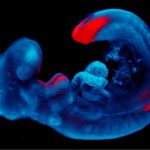Link to Pubmed [PMID] – 11397865
J. Clin. Endocrinol. Metab. 2001 Jun;86(6):2638-42
Y chromosome microdeletions have been reported as a possible genetic factor of male infertility. Despite a large number of studies in this subject, there is still considerable debate and confusion surrounding the role of Y chromosome microdeletions in male infertility. This has been further compounded by observations of Y microdeletions in fertile males. The aim of the present study was to evaluate: 1) the incidence of Y microdeletions in control male population and infertile males, where complete semen and hormonal analysis was available to define whether Y microdeletions are specific for spermatogenic failure or if they can be found also in normospermic men; and 2) whether the suboptimal semen quality reported in Denmark is associated with a higher incidence of Y microdeletions in respect to other populations. Double-blind molecular study of deletions was performed in 138 consecutive patients seeking intracytoplasmic sperm injection treatment, 100 men of known fertility, and 107 young military conscripts from the general Danish population. Microdeletions or gene-specific deletions were not detected in normospermic subjects or in subfertile men with a sperm count of more than 1 x 10(6)/mL. Deletions of the Azoospermia factor (AZF)c region were detected in 17% of individuals with idiopathic azoo/cryptozoospermia and in 7% of individuals with nonidiopathic azoo/cryptozoospermia. The data indicate that: 1) the composition of the study population is the major factor in determining deletion frequency; 2) Y chromosome microdeletions are specifically associated with severe spermatogenic failure; therefore, the protocol described here is reliable for the routine clinical workup of severe male factor infertility; and 3) the frequency of Yq microdeletions in the Danish population is similar to that from other countries and argues against the involvement of microdeletions in the relatively low sperm count of the Danish population.

